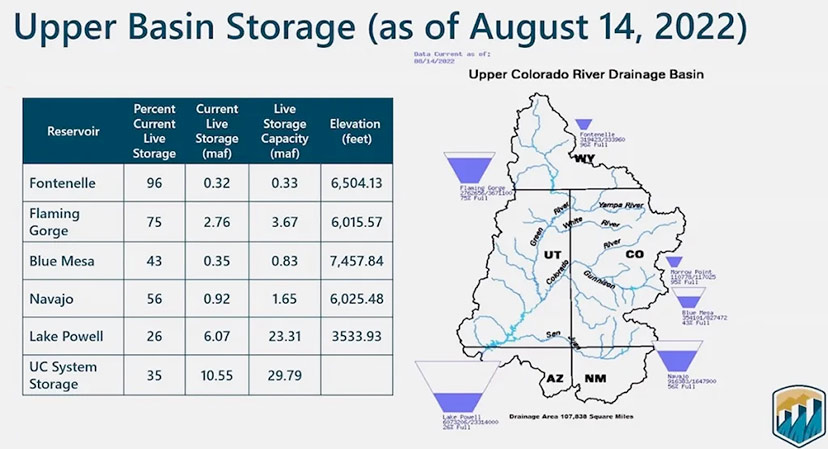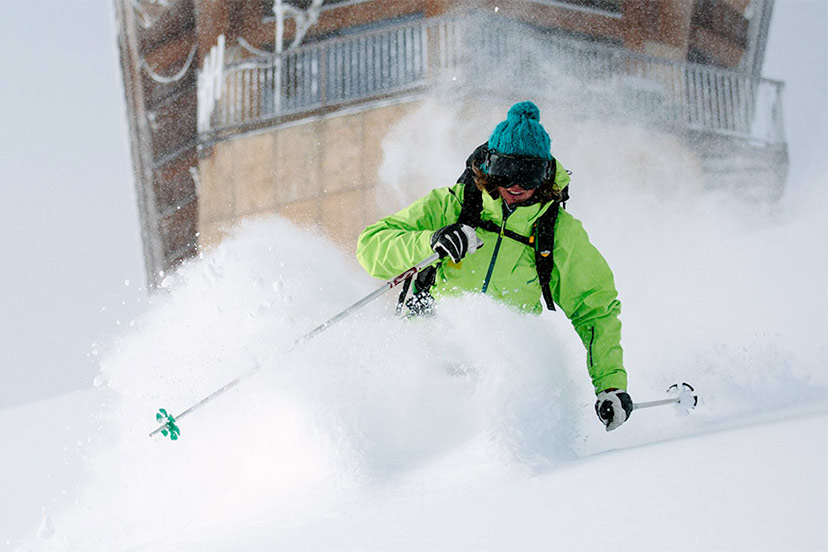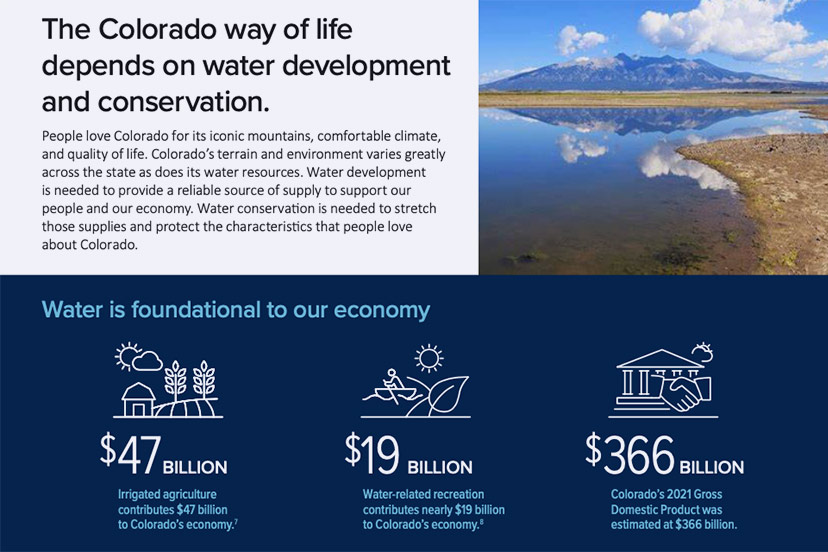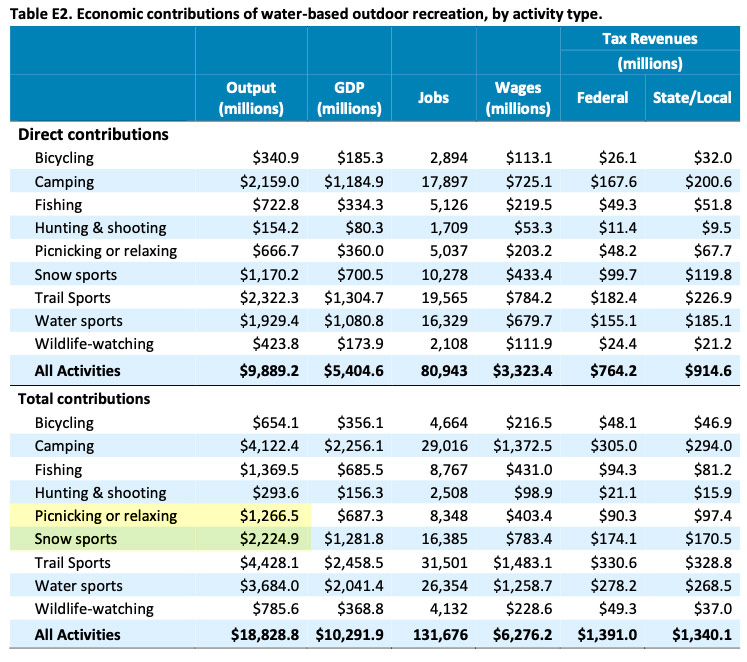The Pagosa Springs Town Council will be meeting today at 5pm at Town Hall, in a joint conversation with the Archuleta Board of County Commissioners, to discuss the possibility of asking county voters for a sales tax increase estimated at $6.5 million, to be split 50/50 between the Town and County.
This would amount to a 37.5% sales tax increase for each government. Neither government has yet explained why they each need $3.26 million more than they already collect. But both governing boards have appeared confident that they can find ways to spend the extra money.
Meanwhile, the Colorado water industry is trying to explain why it needs more than $20 billion to prevent serious water shortages all across Colorado. The explanation is contained in the 239-page Colorado Water Plan, which you can download here. (You are invited to comment on the current draft.)
According to a news article coming out of Wyoming, we have dodged the bullet, at least temporarily.
As Dustin Bleizeffer wrote on the WyoFile website on August 19:
Despite the threat of federal restrictions earlier this summer, the Bureau of Reclamation won’t limit water use in Wyoming or three other Colorado River headwaters states as an emergency response to shrinking water supplies throughout the Colorado River Basin, the agency said Tuesday.
The “three other Colorado River headwaters states” are Utah, New Mexico and Colorado.
Mr. Bleizeffer continued:
Instead, it will again restrict flows from Lake Powell and Lake Mead while tapping upstream reservoirs, including Flaming Gorge on the Wyoming-Utah border, for additional releases in 2023. The federal agency will also impose water-use restrictions in Arizona (21%) and Nevada (8%) while flows across the border to Mexico would be reduced by 7%.
California, meantime, avoided federally initiated water cuts.
I am at a loss to explain why California got a ‘pass’ this time around, considering that they’ve consistently exceeded their agreed-upon allotment from the Colorado River. But this decision was made by the federal government, and surely, they know what they’re doing.
The WyoFile article included this graphic from the federal Bureau of Reclamation, indicating that the entire Upper Colorado storage system is at about 35% of capacity.

The map shows the regions of each ‘Upper Basin’ state (Colorado, Wyoming, Utah, New Mexico, Arizona) that contribute water to the Colorado River. Our nearest water reservoir, Navajo Reservoir, is shown as 56% full.
This was not supposed to happen. “Water storage” was supposed to be the solution to an ongoing little problem in the American West. Namely, an arid climate. A persistent lack of rainfall.
A solution that was supposed to allow unfettered growth of population, industry and agriculture… forever?
Yesterday, in Part One, I mentioned the taxpayer-funded ‘Colorado Water Plan’, and its claim that ‘water-related recreation’ accounts for $19 billion of Colorado’s estimated $366 billion Gross Domestic Product.
There’s a euphemistic term people use:
“Creative accounting”.
Creative accounting refers to an accounting practice that is technically correct but deviates from how accounting policies were intended to be used, sometimes to the point of criminality. The Enron scandal is one of the most prominent examples of creative accounting. In 2001, the U.S. corporation Enron filed for bankruptcy as a result of fraudulent, deceptive accounting practices that were ongoing throughout the 1990s. Another significant example is the WorldCom scandal, in which the company inflated revenue using bogus accounts in order to disguise losses and maintain its position in the market.
Should we call it “creative accounting” when a government document claims that “bicycling” is a form of “water-based outdoor recreation”?
Or “picnicking”? Or “snow sports”?
We understand that water is life. But to the Colorado water industry, water is also profit. Wages. Investment income. When money is involved, we understand that “creative accounting” will sometimes be part of the equation.
Disclosure: I currently serve on the Pagosa Area Water and Sanitation District (PAWSD) board of directors, but this editorial reflects only my own personal opinions, and not necessarily those the PAWSD board as a whole.
Money will continue to play a part in the story of water, here in Archuleta County. Pagosa Area Water and Sanitation District (PAWSD) is currently discussing a $44 million upgrade to its Snowball Road water treatment facility. San Juan Water Conservancy District (SJWCD) recently received a $15,000 report from the Wilson Water Group, which supposedly calculated various types of “water demand” in Archuleta County, with an eye to defining the possible size of the proposed Dry Gulch Reservoir (aka San Juan River Headwaters Project.)
Wilson Water Group did not cite “bicycling” or “picnicking” as a reason to build a storage reservoir.
But they did cite tubing, rafting, wade fishing and other types of fishing as possible justifications for a multi-million-dollar reservoir project.
After analyzing the data (creatively) the Wilson Water Group included in their report a series of graphs that seemed to indicate a “shortage” of recreational water in the San Juan River during certain years and parts of the year.
WWG wrote:
The WEP Phase II Report documented user preference flows for recreational angling and whitewater rafting on the San Juan River. According to the report, the San Juan basin offers exceptional fishing and whitewater opportunities that bring in tourists to the area. The town of Pagosa Springs relies on tourism as a source of revenue and therefore it is important to understand the flow preferences and how they are met…
During my 29 years in Pagosa Springs, I’ve talked to literally hundreds of residents who live here, or tourists who visit here, because of the Wolf Creek Ski Area, which boasts some of the finest powder skiing conditions in North America.
During my 29 years in Pagosa Springs, I cannot honestly recall a single resident or tourist claiming to be here for the “white water opportunities”.
The San Juan River, from the West Fork to the Navajo Reservoir, is a lovely river for floating in an inner tube, during most of the summer.
But “whitewater”?
In my experience, no one visits Pagosa Springs specifically looking for a whitewater rafting experience. People who visit here, and run out of things to do, might book a raft trip. But no one comes to Pagosa for its fabulous whitewater. There are rivers in the American West that offer exciting whitewater experiences. The San Juan River is not one of them.



